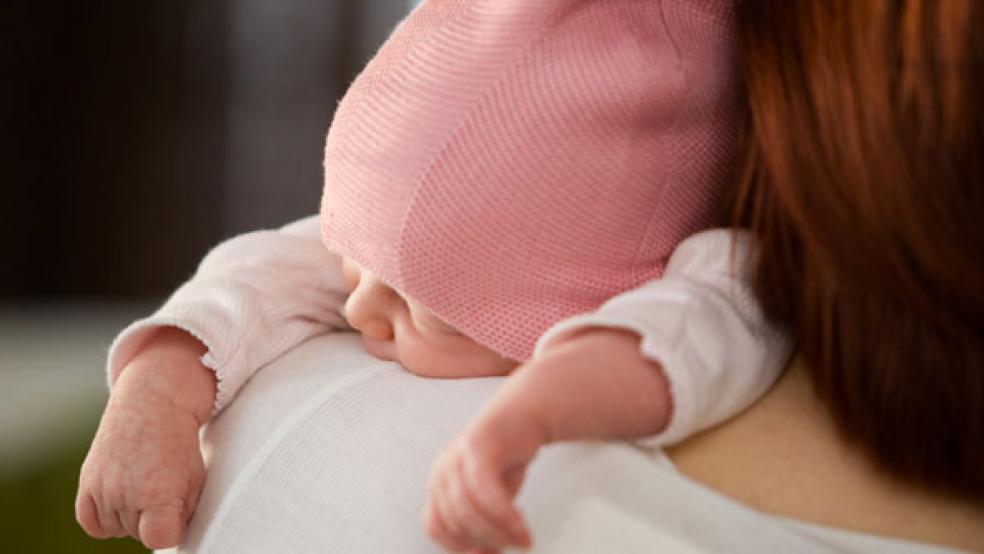Maybe Americans’ worship of Kate Middeleton has sparked excitement for more than just nude pumps and wrap dresses.
It appears that the birth of Prince George Alexander Louis, Britain’s newest heir, coincides with the end of a baby bust on this side of the Atlantic.
RELATED: 12 MOST EXPENSIVE STATES TO RAISE CHILDREN
The U.S. fertility rate will rise from its 25-year low of 1.89 children per woman in 2012 to 1.90 in 2013, according to a report released yesterday from the analytics firm Demographics Intelligence. While the increase is slight, it represents the first time the birth rate has risen since the recession hit. In 2007, the rate was 2.12 children per woman.
“The United States has seen marked declines in childbearing in the wake of the Great Recession,” Demographic Intelligence President Sam Sturgeon said in a statement. “But we think that this fertility decline is now over. As the economy rebounds and women have the children they postponed immediately after the Great Recession, we are seeing an uptick in U.S. fertility.”
Part of the reason for the turnaround is that religious women are having more babies, the report finds. Women who attend weekly religious services intend to have 2.62 children, while those who rarely or never attend services plan to have 2.1 children.
At the other end of the spectrum, some women are choosing not to have any children at all, according to this week’s Time magazine cover story, “Having it All Without Having Children.” In it, author Lauren Sandler--who has made a name for herself be establishing the case for being and having an only child -- argues that more women are opting not to become parents, and instead looking for new paths of acceptance “in a culture that often equates womanhood with motherhood.”
Newsweek covered the issue earlier this year, positing that many of “those opting for childlessness have legitimate, if perhaps selfish reasons, for their decision.”
RELATED: THE OUTRAGEOUS COST OF BRINGING UP TWINS
For some, especially Millennials dealing with dim job prospects and loads of student debt, the choice comes down to economics. A study released last year by the U.S. Department of Agriculture found that it would cost $235,000 for a middle class family to raise a child, without including the cost of college. For others, it’s a career decision, as women worry about being placed on the dreaded “mommy track,” which depresses earnings and puts an umbrella on workplace advancement.
Women that do want children are marrying later and waiting longer to have children, lowering their chances of conceiving or their time window to have more than one or two kids, should they want them.
The decline in the birth rate during and after the most recent recession mirrors what has happened during other economic hard times. Historically, once the economy rebounds, so does the birth rate.
And it probably wouldn’t hurt if William and Kate decide that Prince George needs a sibling.





